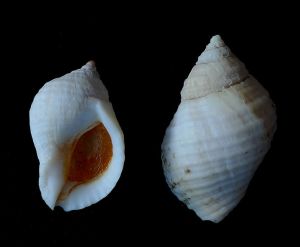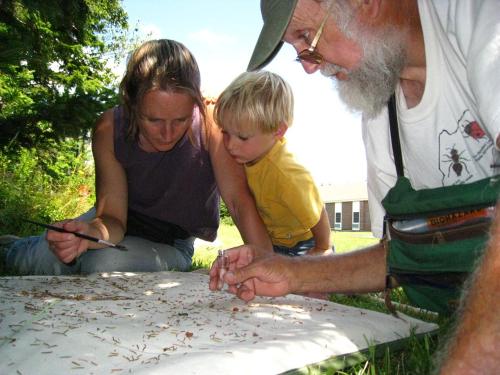Acadia’s annual fall HawkWatch has begun atop Cadillac Mountain; Jenna Dodge will write weekly updates, which I will post here. Here her first “Riding the Winds” report:
As summer fades into autumn, it is accompanied by many important changes like the shortening of available daylight and a drop in temperature. These two key features of seasonal shift are a strong cue for many animals; it may trigger the return to school for humans or the preparation for hibernation for black bears, but for raptors or birds of prey, it means migration.
This annual southward movement is initiated by an abundance of food, temperature, and, predominately, the amount of available daylight. A decrease in the photoperiod plays a key role in prompting certain hormones that signal raptors it is time to get ready for their seasonal journey. To prepare, raptors will consume ample amounts of food to bulk up their fat, or fuel, reserves needed to fly great distances. They can often be observed acting in a very restless manner as if they were itching to get on the “road,” or, in their case, the wind.
Strong gusts of wind from the north help push raptors to their desired destination along the eastern coast; this jagged North American boundary acts as a map for migrating birds and provides key landmarks to keep them on course. Furthermore, updrafts, vertical movements of warm air, form along mountainsides and are very favorable to birds that exploit them for a free ride. Due to this, each year raptors by the thousands fly over Cadillac Mountain, the highest peak on the eastern seaboard, which makes it an excellent site to view their journey. Since 1995, employees of Acadia National Park have watched the sky; recorded the particular raptor species and correlating abundance as the birds soar overhead; and related information to the public. HawkWatch is a vital component in assessing raptor populations throughout the nation, and there are many sites where hawk-watching is performed. Data are submitted to the nonprofit organization Hawk Migration Association of North America (HMANA) and provide researchers with a notion of the health of the population.
Since its inception in Acadia, HawkWatch has entertained numerous visitors with about eleven different species of raptors, averaging about 2,600 sightings per season. We can expect to see a variety of birds of prey atop Cadillac—falcons, accipiters, buteos, eagles, osprey, and harriers, which all possess unique physical characteristics, as well as the ecological and intrinsic importance that we will discuss in later issues of Riding the Winds.
Over the next couple of months, the fall sky will become heavily spotted with migrating raptors, and with your help we may contribute to the pool of knowledge surrounding migration. Please join us from 9 a.m. to 2 p.m. (weather permitting)~200 yards down the Cadillac North Ridge Trail to take part in HawkWatch. Bring your binoculars (the park may provide some if you do not have any) and an eager curiosity for raptors and their splendor.


